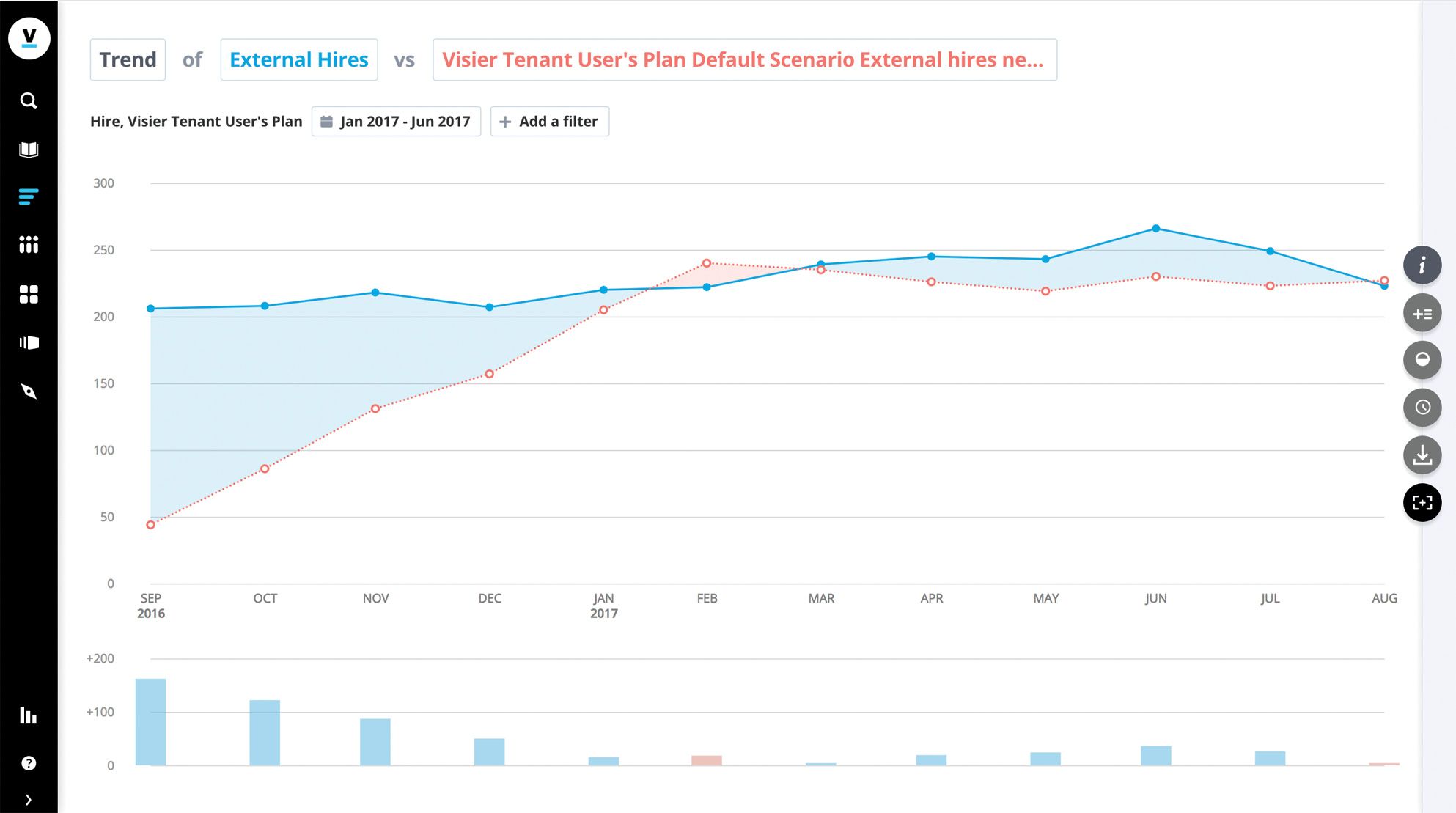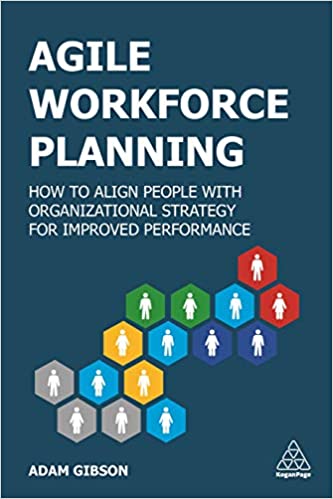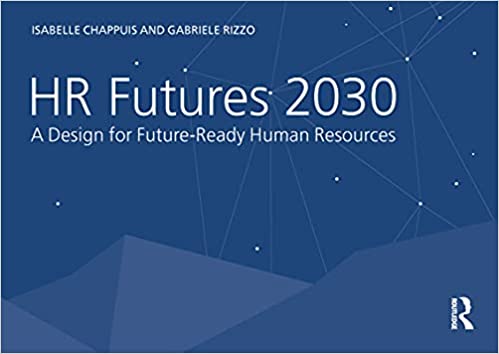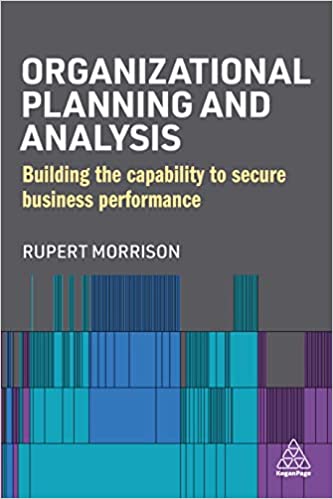HR Data Governance and Business Relevant HR

Hello!
My name is Sebastian Szachnowski and I write about People Analytics and Digital Transformation of HR. All in relevance to the business. This is the first issue of my newsletter.
In this edition, I will focus on HR Data Governance and Business Relevant HR function. Except of that, you will learn about People Analytics case study from Electronic Arts, and you will get some reading recommendations.
So, fasten your seatbelts, and let’s go!
Table of contents:
- HR Data Governance
- Business Relevant HR (and People Analytics)
- How Electronic Arts (EA) has reinforced value of campus recruitment?
- Recommended books
HR Data Governance
When we think about fascinating world of insights coming from people analytics, when we feel the excitement regarding exploring unknown waters of workforce data, the data governance might sound like this boring dimension of analytics we all would like to skip. We should not do that, however, because without robust HR Data Governance, even the best data model will degrade over time. And that will lead to mediocre people analytics.
"Governance provides the mechanism, processes, and procedures by which the company operates and manages risk of people analytics."
HR Data Governance ensures that the right people provide direction for work, that the structure and stewardship for managing data and projects are implemented and applicable, and that the risks are managed appropriately.
First step for settling HR Data Governance is aligning people analytics with corporate strategy. Lack of such alignment might lead to lack of clarity on the mission, conflicting or overlapping priorities and a feeling of inadequacy.
“Good things will happen when you align people analytics work with corporate strategy.”
Another element of best practices regarding HR Data Governance is developing a vision, a mission and a brand for people analytics. A clear brand of the people analytics team will help gain credibility and integrity. Both are essential to be successful in this field.
The board of people analytics enables its mission, goals, and work. The board is responsible for guiding the strategy and work of people analytics. It makes sure that the people analytics deliver the value. Ideally, the board is including a mix of business executives, functional executives and HR leaders.
Additionally, it is recommended to setup a partnership with finance to establish a method for measuring business value and ROI for each people analytics project.
Ethics and privacy council manages the aspects of data privacy, and the ethical and moral aspects of the types of projects included in the people analytics function’s focus. One of the mechanisms to mitigate risks around the use of people data is an ethics charter.
“The ethics charter was designed to help the people analytics team use people-related data in a way that would make colleagues feel safe and protected and consequently help reveal insights in the business. The ethics charter continuously improves people practices, enhances colleague experiences and at the same time bring business value to the company.”
Example guiding principles for the ethics charter of people analytics from Lloyds Banking Group:
- Approach every project with an unbiased and neutral mindset throughout
- Protect colleagues by using anonymous or aggregated data and never name or allow the identification of individual colleagues in our published findings
- Apply proven data models and statistically sound analysis techniques
- Always protect the data and insights we find, ensuring that only those with a need to know have access
- Strive to improve the working lives of colleagues by applying consistent, fair and unbiased analytical methodologies
- Provide data-led insights that empower decision-makers to drive impact for their colleagues, customers and stakeholders
- Listen to feedback and adjust our approach and models to take account of new information and input
- Record, review and maintain a permanent record of ethical considerations at each stage of our analytics projects, and revisit if a project scope changes
- Ensure accountable persons are actively involved in ethical decision making throughout the life cycle of the project
There is much more regarding the HR Data Governance, including data management and data stewardship, but on these subjects, I will elaborate on in the next issue.
Source: https://www.amazon.com/Excellence-People-Analytics-Workforce-Business/dp/0749498293/
Business Relevant HR (and People Analytics)
HR is not about HR. HR is about the business. Too often HR is full of solutions looking for problems rather than working out what the problem is in the company. The recipe for success in HR is to engage with the business agenda and deliver what they need. What you should care about HR are the people, but not the HR function itself.
“The classic is employee engagement, the big fad of HR. If you read some of Rob Briner's work, there actually is a correlation between Employee Engagement and firm performance. The only problem is the causality works the wrong way. So the more successful the company is the more engaged employees are. Now what that means to me is, I'm not totally opposed to employee engagement, but we're not doing Employee Engagement to do Employee Engagement.”
We should be starting with how we improve performance in our business, not starting with how we do Employee Engagement.
HR should be externally focused as much as on what’s going on inside the company. Companies would like to know or predict the outcome that they can’t predict. The role of HR is to equip them to deal with ambiguity. Some leaders might expect that HR will give them a whole bunch of analytical tools and forecasting techniques that would allow them to create certainty in the world of ambiguity. However, the definition of ambiguity is there is no solution. HR role is to make a leadership team comfortable with that.
“What you've got to do is hold a strong opinion weakly. So, you've got to do your analysis move on the basis of what you find out, but then you've got to be willing to accept you're probably wrong and you need to shift direction, but equally not moving in this environment isn't acceptable.”
In the world full of disruptive changes, the idea to have three, four, five-year plan has vanished. HR should not focus on identifying one potential future and planning a scenario for it. It’s about identifying multiple futures and thinking through what you would do if they happened. If these futures aren’t going to happen it’s fine, we must learn to accept we will be wrong.
“Good leaders, good HR people have got to have the confidence to say when I made that decision it was the right decision at the time, but the world has changed, I've got new data, I was wrong, we need to shift. But it's so much about ego, I can never ever admit to other people I'm wrong. You've got to have the confidence to say, no I was wrong. We need to change.”
There are questions HR should be able to answer to check their business relevance:
- What is the business problem that the particular initiative, project, tool, or process is the answer to?
- How HR help the company build organisational capability to deal with ambiguity?
- How HR help the company to actually become a disruptor?
- How do you make money in your business?
The purpose of HR is building the capability of an organisation to deliver its strategy. In fast changing world the disruption is so huge that it’s not just technology, it’s demographics, politics, competences, culture, and more. The companies who try to react to disruption rather than moving ahead will fail. Therefore, the role of HR is to create capability in organisations to become the disruptors in their industry.
One of the major tasks of HR is to create a culture in which risk taking isn’t punished. Of course, good risk-taking that’s not the massive risk which bet the business on it. Let's take small experiments and let's learn from the move, and move, and learn. Second task is to create a culture of collaboration. Most good disruption doesn't come from the lone genius. It comes from groups of people usually from very different backgrounds. The third task is building agility and hyper-awareness. Most disruptions aren’t happening in the corporate head offices, it’s happening out there in the business on the periphery.
People Analytics should not be connected only to HR data. It should include HR, production, sales, marketing, risks, and other data available. The overall goal is to link People Analytics to the business problem, so it helps answer questions like:
- How we're going to increase sales?
- How are we going to increase productivity?
- How are we going to be faster to the market?
- How we're going to beat our result?
You start on the left with business strategy and then do the People Analytics. If you start right with the People Analytics, to justify what you have already decided to do, then nobody will engage with your results because it doesn’t make any difference.
How Electronic Arts (EA) has reinforced value of campus recruitment?
In the beginning of their journey with People Analytics, EA was using traditional HR reporting to deliver information to HR leaders and managers.
”To begin its journey towards data-driven workforce decision making, EA’s people analytics team began delivering extensive, hard-coded, monthly workforce reports to HR and business leaders, prompting both an extensive data clean-up effort and a better appreciation of HR data. The lengthy reports were a hit with leaders who were looking for basic workforce facts to help them understand and plan for their talent needs.”
As the demand for HR reports grew and the reports included more and more data, like trends for hiring, talent movements, terminations, demographic shifts, and other employment factors; the people analytics team stuck with reactive HR reporting. They didn’t have capacity to build deeper analysis, explore underlying trends, risks, or build predictive models.
What they were doing was workforce observation, but they couldn’t do the next step – diagnosis.
The opportunity arises when EA implemented new HCM system Workday. The decision was made to augment it with robust data layer provided by Visier. Among other things, they replaced all the standard, manually generated monthly and quarterly workforce reports with online presentations that leaders could access on demand.
Another direct benefit was in justifying the value of University Relations program. Analysing the performance, promotion, and cost data from hires over the past four years, EA was able to prove that hiring new graduates was a good investment.
People Analytics illustrated that after two years of tenure at EA, new graduate hires were consistently being promoted at a higher rate, were more likely to be rated as high performers, and cost the company less than their more experienced peers. Using this information, the University Relation team encouraged business leaders to commit to a more aggressive new grads hiring target for the following year.
“With Visier, we showed that new grads acquired through the University Relations program cost the same or less than their experienced peers, yielding a better performer with more potential at the same or lower cost.” said Leonard Dandurand, Group Director of HR Information Services and Workforce Planning.

“Going forward, Dandurand says his team plans to analyse workforce data alongside business data to help discover the best predictors of success for each game. Attributes of the teams and team members that develop, market, and support each video game—such as their engagement scores, performance level, cost, manager, and span of control—will be compared with product data, game quality, financial results, and customer satisfaction to discover which paths lead to the best results.”
Lessons Learned from EA:
- Make sure everyone uses the same data for their reports and analytics.
- Establish a consistent schedule to provide workforce reports and use it as a rallying point for your analytics team.
- Create a center of excellence for people analytics within your HRMS service center.
- To ensure that your team remains unbiased, staff it with team members who are unaffiliated with compensation, performance, or other talent management areas.
- Hire a data scientist who can tell good stories with your workforce data.
Source: https://www.visier.com/customer-stories/electronic-arts/
Recommended books
Below are three interesting books I learned about recently. I haven’t read them yet, but they have positive reviews, and they are touching current HR trends and challenges.
Agile Workforce Planning: How to Align People with Organizational Strategy for Improved Performance, by Adam Gibson

Agile Workforce Planning is a practical guide for HR and organization development practitioners needing to align their staff, skills and resources with evolving company goals. Author explains how to collect data to calculate and predict staff churn as well as how to use qualitative and quantitative demand modelling to forecast for future needs and provides strategies to address these including lateral internal recruitment. Book includes case studies from companies including Apple, Coca-Cola, Procter & Gamble, NATO and the UK National Health Service.
https://www.amazon.com/Agile-Workforce-Planning-Organizational-Performance/dp/1789666058/
HR Futures 2030: A Design for Future-Ready Human Resources, by Isabelle Chappuis, Gabriele Rizzo

Futurist guide to the challenges and changes lying ahead in the world of work. The world of work is evolving at an exponential rate, and significant shifts are expected. COVID-19 was a warm-up lap and an accelerator of changes, but many still lie ahead. Those changes are rarely addressed in current general HR thinking. At the same time, the growing complexity is making employees and employers alike anxious about the future of work. This book is backed up by evidence-based trends and signals and offers pragmatic upskilling pathways. It is dedicated for forward-looking scholars and HR leaders compelled to find answers for their inevitably obsolescing, inorganically morphing workforce.
The book was written by the former Director of HEC Lausanne’s Executive MBA and founder of Executive Education of HEC Lausanne, together with a NATO- and U.S.-awarded futurist with experience in academic teaching and executives training.
https://www.amazon.com/HR-Futures-2030-Future-Ready-Resources-ebook/dp/B094PJLSQM/
Organizational Planning and Analysis: Building the Capability to Secure Business Performance, by Rupert Morrison

This book attempts to explain how to take a data-driven approach to workforce planning and allow the business to reach its strategic goals. Organizational Planning and Analysis (OP&A) is a data-driven approach to workforce planning. This book covers everything from how to build an OP&A function, the difference between strategic and operational workforce planning and how to manage demand and supply through to how to match people to new or changing roles and develop robust succession planning. Organizational Planning and Analysis also covers how OP&A works with HR operations including recruitment, L&D, reward and performance management.
Book is supported by case studies from organizations including KPMG, Sainsbury's, WPP, Accenture, TSB, Johnson & Johnson, Aer Lingus and FedEx.
https://www.amazon.com/Organizational-Planning-Analysis-Data-Driven-Workforce/dp/1398605816/
Inspiring quote
“A mistake is not something to be determined after the fact, but in light of the information available until that point” ― Nassim Nicholas Taleb, Fooled by Randomness: The Hidden Role of Chance in Life and in the Markets
Thank you for reading my newsletter! I’ll be delighted to get your feedback about the newsletter and this issue.
Do you know someone who might be interested in this newsletter? Share it with them.
You can also:
- Subscribe to my newsletter https://szachnowski.com/
- Connect with me on LinkedIn https://www.linkedin.com/in/sebastianszachnowski/
- Follow me on Twitter https://twitter.com/sszachnowskiFollow me on Instagram https://www.instagram.com/sszachnowski/
- Send me an email sebastian@szachnowski.com
Let's stay in touch! I look forward to reaching out onto your mailbox in two weeks!
